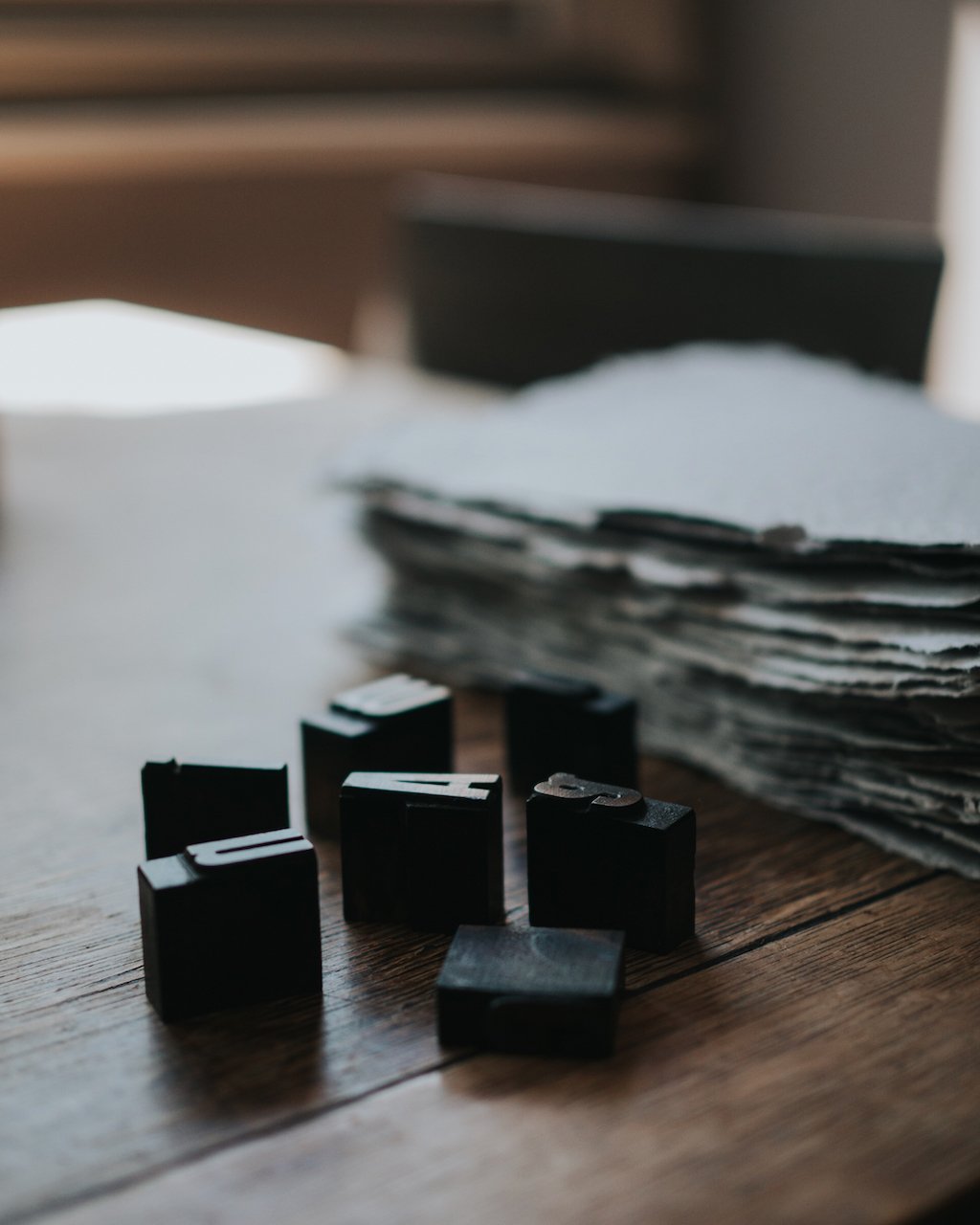Printing with wood type
I fell in love with wood type on a letterpress printing course at the Bodleian Libraries. By then I had already done an introductory workshop on using an Adana 8x5 tabletop press, and had bought my own, together with lead type – Perpetua, Bembo and Garamond in various sizes. I’d thought about having plates made from digital designs, possibly using my own calligraphy – something I still want to try at some point – but I hadn’t considered wood type at all.
The printing workshop at the Bodleian is a treasure trove of type as well as hosting a wonderful collection of historic presses. Seeking inspiration for a project, I started looking through the drawers full of wood type, and, before even setting or inking it, I was hooked.
Why I love wood type
For a start, there is something wonderfully playful about wood type. It must hark back to memories of playing with wood blocks as a child. The chunky blocks, in tactile wood (lead type is definitely less pleasant to handle) invite play and experimentation. They are easy to move around and quick to set, ready for a test print within minutes.
And then the real magic comes in. Wood has its own character, and each letter, especially when dealing with vintage type, comes with its own imperfections, organically worn, bearing its history of making up word after word over the years, rolled with ink and applied to paper. Wood type makes for bolder, but somehow softer impressions, full of personality and history.
Wood type old and new
Of course, imperfect impressions were not the objective when first producing wood type – just as the deep embossing of letterpress printing with lead type so beloved today would have been frowned upon in the past.
Wood was originally used as a more practical option to make type at larger sizes suitable for printing posters. The sheer weight – and cost – of metal type made it unviable beyond a certain letter height. Wood type is in fact also known as poster type.
Vintage wood type is a precious commodity to printers, but sourcing it in a usable condition is not always easy. Individual letters get used for all sorts of decorative purposes, irretrievably breaking up alphabets as a result. I feel a little guilty about the few blocks I bought years ago, sold in this way, that would have at one time been part of a full, working set.
Though not widely available, new wood type is also still being made, with some interesting projects and experiments marrying digital technology with this most mechanical of printing processes.
But for me, there is nothing quite like the romance of a vintage font, its own printing history and imperfections adding tactile layers of meaning to each printed word.
Sources
What is wood type? from the Hamilton Wood Type & Printing Museum
Woodletter or poster types, on British Letterpress
Making wood type then and now, Thomas Gravemaker speaking at the Weston Library






